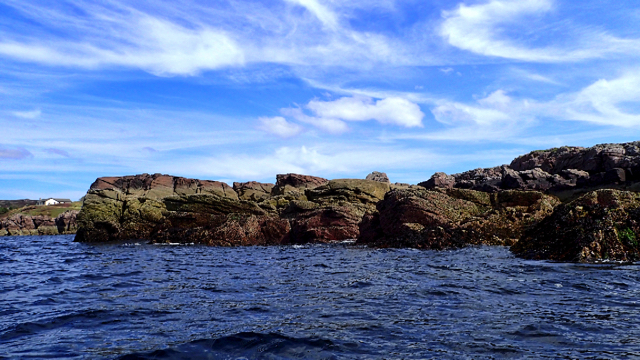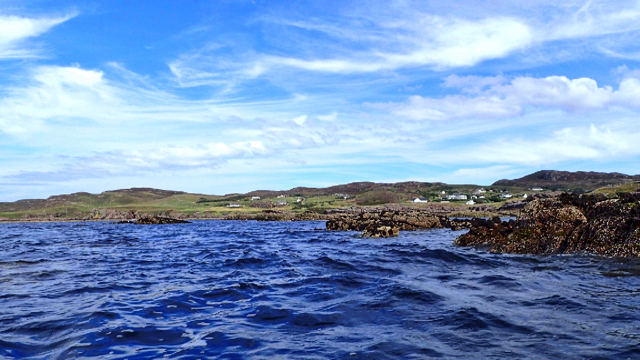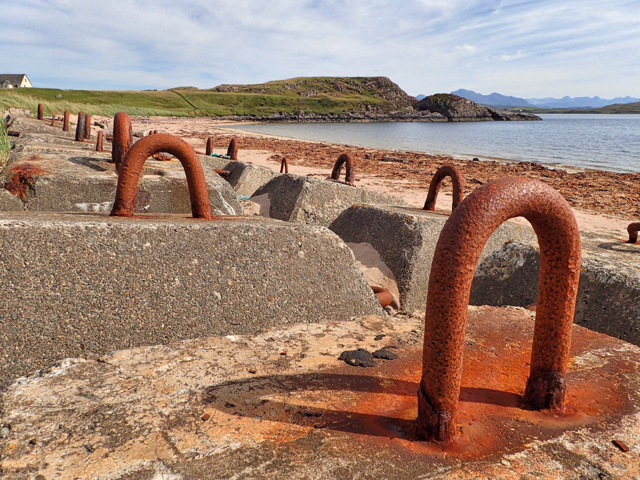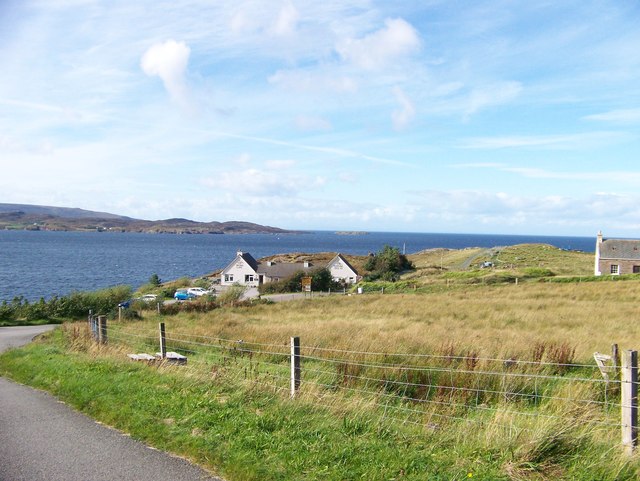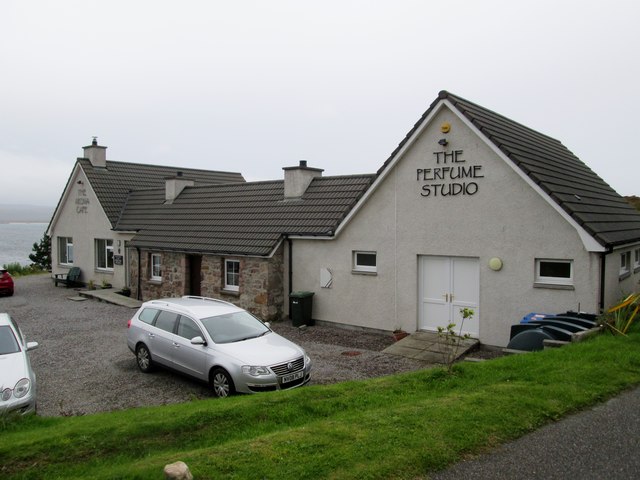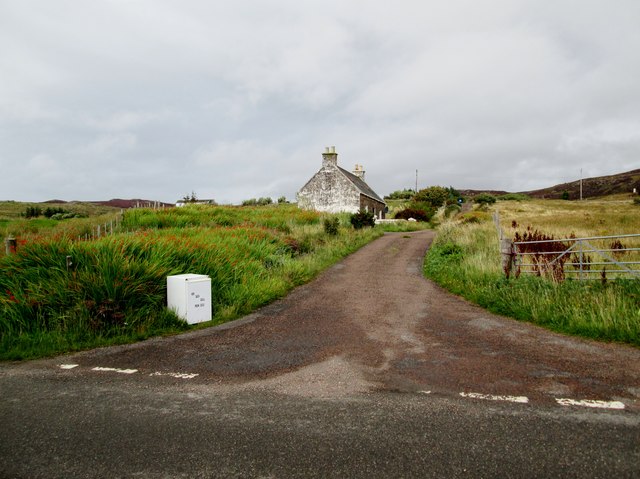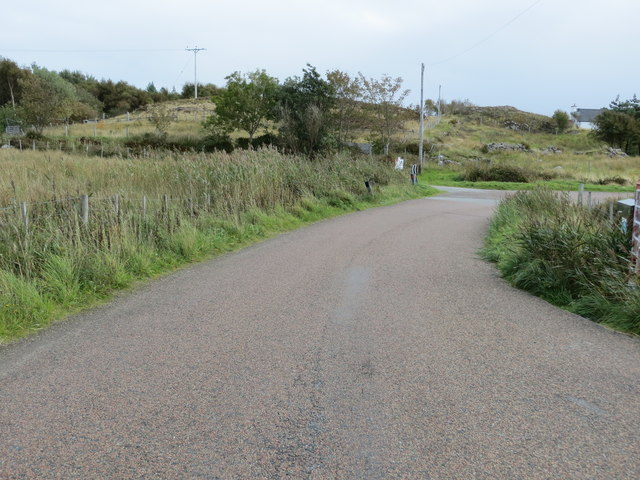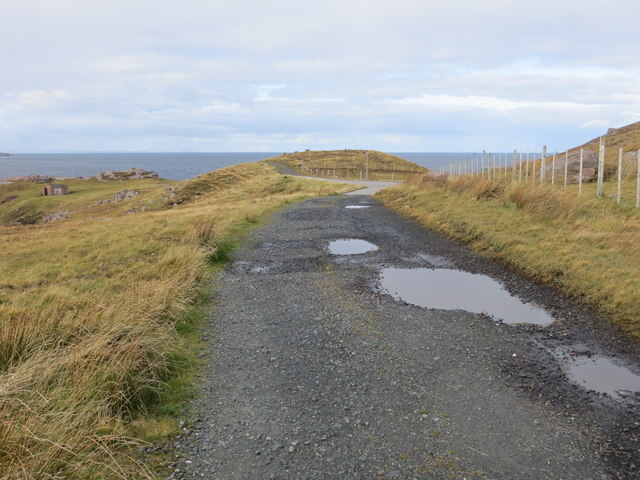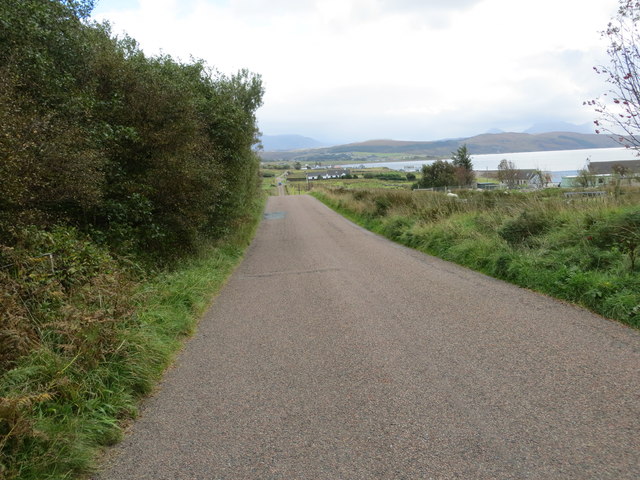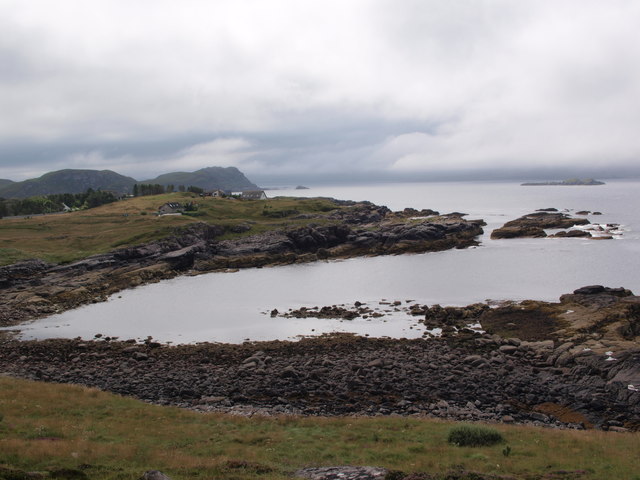Leacan Donna
Coastal Feature, Headland, Point in Ross-shire
Scotland
Leacan Donna

Leacan Donna is a prominent coastal feature located in Ross-shire, Scotland. It is classified as a headland or point, jutting out into the North Atlantic Ocean. The name "Leacan Donna" translates to "brown hillside" in Scottish Gaelic, which aptly describes its appearance.
This headland is characterized by its rugged and rocky terrain, with steep cliffs that cascade down to the crashing waves below. The cliffs are composed of ancient sedimentary rocks, which show evidence of millions of years of geological activity and erosion. The exposed rocks display various layers and colors, adding to the headland's visual appeal.
Leacan Donna is known for its impressive views, offering panoramic vistas of the surrounding coastline and ocean. On clear days, it is possible to see other nearby headlands and the distant horizon. The headland also serves as a vantage point for observing local marine wildlife, such as seals, dolphins, and seabirds.
Accessing Leacan Donna requires navigating along a coastal path or trail, which can be uneven and challenging at times. Visitors are advised to exercise caution and wear appropriate footwear. The headland is a popular destination for hikers, nature enthusiasts, and photographers, seeking to capture its raw beauty.
Overall, Leacan Donna in Ross-shire is a stunning coastal feature, showcasing the natural wonders of Scotland's rugged coastline. Its dramatic cliffs, breathtaking views, and diverse wildlife make it an essential visit for those exploring this picturesque region.
If you have any feedback on the listing, please let us know in the comments section below.
Leacan Donna Images
Images are sourced within 2km of 57.867036/-5.6468738 or Grid Reference NG8392. Thanks to Geograph Open Source API. All images are credited.
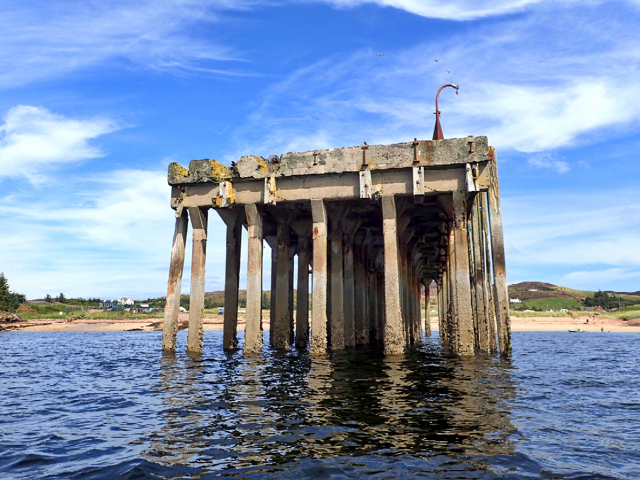

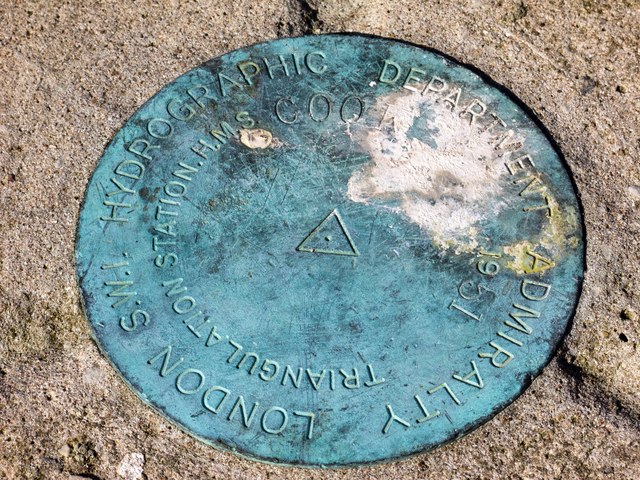
Leacan Donna is located at Grid Ref: NG8392 (Lat: 57.867036, Lng: -5.6468738)
Unitary Authority: Highland
Police Authority: Highlands and Islands
What 3 Words
///pigtails.invent.octagonal. Near Gairloch, Highland
Nearby Locations
Related Wikis
Mellon Charles
Mellon Charles (Scottish Gaelic: Meallan Theàrlaich) is a remote crofting village on the north east shore of Loch Ewe near Gairloch in Wester Ross, in...
Ormiscaig
Ormiscaig (Scottish Gaelic: Ormasgaig) is a remote crofting village on the north east shore of Loch Ewe in Achnasheen, Ross-shire, Scottish Highlands and...
Cove, Highland
Cove is a remote hamlet located on the northwestern shore of the sea loch Loch Ewe, and 8 mi (13 km) northwest of Poolewe in Ross-shire, Scottish Highlands...
Rubha Mòr
Rubha Mòr is a remote peninsula in west Scotland, in the western region of Ross and Cromarty. The peninsula stretches from Greenstone Point in the north...
Nearby Amenities
Located within 500m of 57.867036,-5.6468738Have you been to Leacan Donna?
Leave your review of Leacan Donna below (or comments, questions and feedback).
